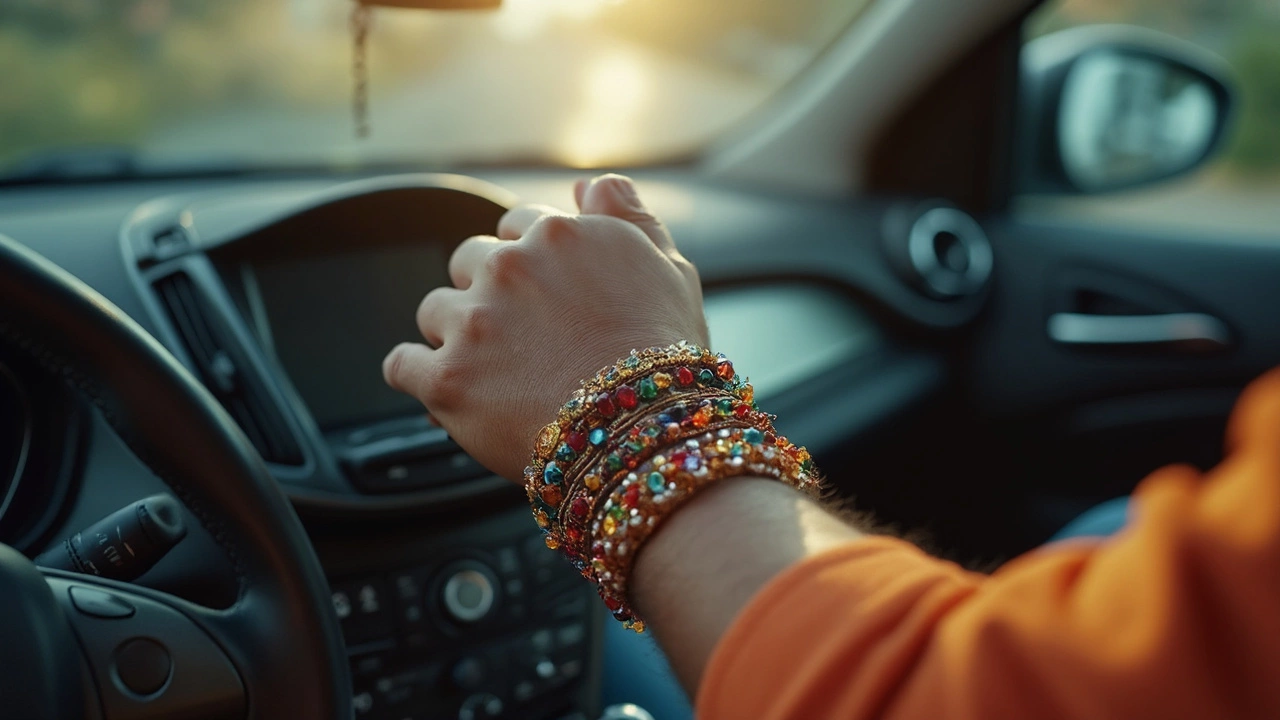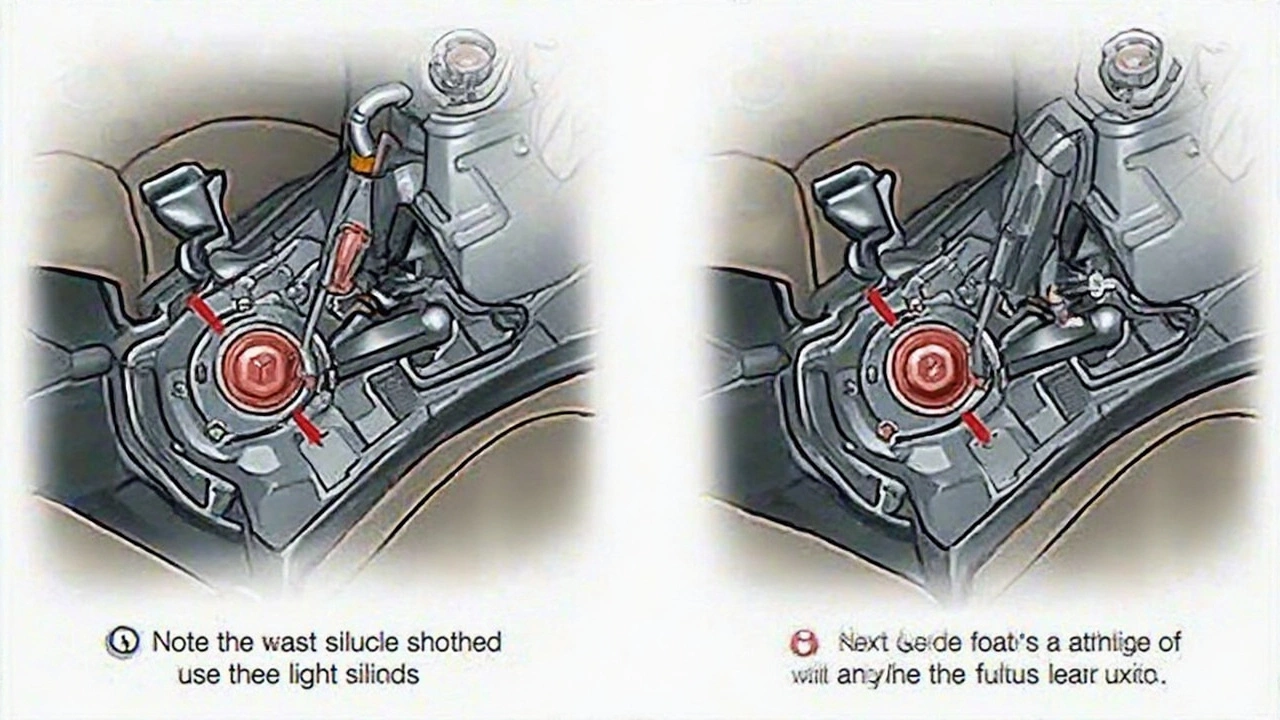Can You Shift Gears Without Using the Clutch? What Really Happens
 Apr, 28 2025
Apr, 28 2025
Ever been stuck in traffic and wondered if you could just skip the clutch and slam it into gear? Some folks try it when their clutch pedal goes dead or just to feel like a driving pro. But here’s the naked truth: you can shift gears in a manual without touching the clutch—just not without risk.
The magic (or mayhem) happens because of how manual transmissions work. Each gear shift is all about matching the engine speed (RPM) to the speed of the wheels and the gear you want. If you get the timing just right, the gears can mesh smoothly, and the stick slides in. Miss that window, and you’ll know it. Grinding gears sound awful for a reason—you’re forcing metal parts together when they’re not lined up.
People sometimes use this trick in emergencies. If your clutch cable snaps mid-drive, clutchless shifting might save you from a tow truck. But if you’re just curious, remember: it’s a skill that takes practice, a lot of patience, and usually, some broken parts along the way.
- How Clutchless Shifting Actually Works
- When Do Drivers Try to Shift Without the Clutch?
- What Happens to Your Transmission and Clutch?
- Should You Ever Try Clutchless Shifting?
How Clutchless Shifting Actually Works
If you’ve ever wondered how people shift gears without clutch, it's all about timing. In a manual transmission, the clutch is usually what disconnects the engine from the wheels, letting you swap gears smoothly. But technically, you don’t always need it—if you can match the speed of the engine and the speed of the transmission just right.
Here’s what happens: when you let off the throttle, the engine slows down. At just the right RPM, there’s a tiny moment when the gear teeth can slide together without crunching—that’s the window for a clean shift. On upshifts (like from second to third gear), you quickly let off the gas, gently pull the shifter out of gear, wait until the engine RPM drops closer to where the next gear needs it, and then slide the stick into the next spot.
Downshifting without the clutch is even trickier. Now you have to actually give the gas pedal a little blip while the stick’s in neutral, bringing the engine RPM up to match the lower gear. If you do it right, the shifter slots in pretty smoothly. If you miss, there’s grinding. It’s unforgiving, and you’ll definitely hear it.
- On older cars or trucks, this trick works better—new manuals have tighter tolerances and syncros that wear fast when you mess it up.
- Race drivers sometimes use clutchless shifting for split-second gear changes, but they've practiced so much that they make it look easy.
- For most daily drivers, clutchless shifting is risky—if you don’t get the RPM match spot-on, your manual transmission will pay the price in the long run.
If you want numbers, here’s how close the speeds need to match. When upshifting at 3000 RPM from third to fourth, for example, your engine typically has to drop down by 700-1000 RPM, depending on gear ratios. That’s not a big window—it takes skill to nail it every time.
Bottom line: the clutch is there for a reason. Clutchless shifting is possible thanks to the way gear teeth interact, but it’s not a game for the mechanically shy or the faint of heart. Nail the timing, or your transmission parts will let you—and everyone else—know about it.
When Do Drivers Try to Shift Without the Clutch?
You might think only daredevils try shift gears without clutch moves, but there are real situations where everyday drivers give it a shot. The most common is when the clutch pedal or cable suddenly fails. If your clutch goes out while you’re on the road, you might have no choice but to attempt clutchless shifting just to make it home or to a repair shop. Most people don’t plan for this, but being stranded can make you creative fast.
Track driving and motorsports are another big reason. Some skilled racers and folks who push their cars at high speed test out clutchless shifting to save time between shifts. With split-second gear changes, every fraction of a second counts, so skipping the clutch pedal is seen as a way to get a quick edge.
And then, there’s the curious crowd—drivers who want to understand their manual transmission inside and out. Some drivers just try this as a learning experiment, often after reading about it online or watching a YouTube tutorial. Usually, it’s just for short distances or low speeds so they don’t trash their clutch kits or transmission.
You’ll also see clutchless shifting in a pinch if someone is trying to bump start a car where the starter is dead, or if the battery has died. In these cases, getting the car rolling, matching the revs, and popping it into gear without the clutch can help get things moving.
- Clutchless shifting is most common in emergencies or if a clutch cable snaps.
- Some racers use it for quicker shifts, though it’s tough on the gear synchronizers.
- Curious drivers try it as a skill challenge or test of mechanical feel.
- It's sometimes used to bump-start a car in a real pinch.
Here’s a quick look at the most common reasons and settings for clutchless shifting:
| Scenario | Why Shift Without the Clutch? |
|---|---|
| Clutch Failure | To get the vehicle moving when the system is down |
| Track/Racing | Shave off milliseconds, though hard on parts |
| Curiosity/Practice | Trying out skills or learning how the gearbox works |
| Bump Starting a Car | Start the engine without using the starter or clutch |
Just remember, while it’s possible, using clutchless shifting as a regular habit will put your transmission and clutch kits at way more risk for serious damage.

What Happens to Your Transmission and Clutch?
Trying to shift gears without the clutch turns driving into a gamble. Here’s what’s really happening inside your car when you skip the clutch pedal: gears are still spinning, metal grinding on metal if the speeds don’t match. Even a slight mismatch leads to noisy gear clashes—and that’s not just annoying; it’s doing real harm.
Manual transmissions depend on something called synchronizers to help gears mesh smoothly. Repeated clutchless shifting wears down these synchronizers fast, especially in older cars. Think of the synchronizers as tiny referees making sure everything’s lined up. When they’re worn out, the stick gets harder to move, and you could lose the ability to get into certain gears at all.
Now, if you’re wondering about the actual numbers, repair shops see a lot more transmission rebuilds from folks who get rough with clutchless shifting. Here’s a snapshot of what can fail when you use this trick too often:
- Synchronizer rings: They get chewed up, leading to gear crunching every time you shift.
- Gear teeth: If you hear grating or feel hard resistance, you’re likely wearing down the teeth—these are expensive to fix.
- Bearing surfaces: Sudden gear engagements put extra stress on bearings, which can start making noise or, worse, seize up.
Driving this way doesn’t just damage your transmission. It can also sneak up on your clutch, since any forced engagement or totally missed shifts can shock the system and stress the parts. If you try to use clutchless shifting to “save” a worn clutch, you might just end up replacing both the clutch and the transmission—a costly double whammy.
Check out this breakdown of repairs from a reputable mechanic group in 2024 who tracked what parts failed most often in cars driven with frequent clutchless shifting:
| Part | % Cases with Premature Failure |
|---|---|
| Synchronizer Rings | 65% |
| Gear Teeth | 32% |
| Bearings | 27% |
If you want your transmission and clutch to last, sticking to proper manual transmission technique is the way to go. Regular shifting doesn’t just feel smoother—it keeps those expensive parts in good shape.
Should You Ever Try Clutchless Shifting?
Here's the big question: is shifting gears without the clutch a smart move or just wishful thinking? Most mechanics would tell you it’s not something you should do for fun or as a routine. Clutchless shifting puts a ton of stress on your gearbox and, over time, wears out parts way faster than normal. People sometimes do it in emergencies, like when their clutch pedal won’t work and getting home is a bigger priority than keeping the car in perfect shape.
The main problem? Clutchless shifting depends on getting timing just right. If you’re even a little off, you’ll hear that ugly grinding noise—metal slamming into metal. That means you’re probably shaving time off your transmission’s life. Here's what Road & Track said about clutchless gear changes:
"Clutchless shifting can be done, but every missed rev-match or forced engagement increases the risk of damaging gear teeth or synchros, making repairs much more likely down the line."
There are a few moments where it might make sense, but trust me, these are rare:
- Emergency situations: The clutch cable snaps or the hydraulic system fails and you need to limp the car to a safe spot or to the shop.
- On a racetrack: Some racing drivers and experienced mechanics can do short bursts of clutchless shifting to shave a tiny bit of time off laps, but their transmissions are usually built to handle the abuse and they're ready to rebuild them often.
If you’re driving your daily car, though, using the clutch is a much safer bet. Modern clutch kits are designed to take the beating so your gear synchronizers and other expensive bits don’t have to. Replacing a clutch is annoying, but it’s way cheaper than a full gearbox rebuild.
Here's a quick look at what you’re risking, plain and simple:
| Method | Potential Outcome |
|---|---|
| Clutchless Shifting | Possible gear damage, faster synchro wear, risk of being stranded |
| Normal Clutch Use | Smoother shifts, gears and synchros stay healthier longer |
The bottom line: unless you’re out of options or you really know what you’re doing, stick with the clutch. If your pedal ever stops working, sure—go ahead and try clutchless shifting to get to safety, but get those clutch kits checked or replaced right away.